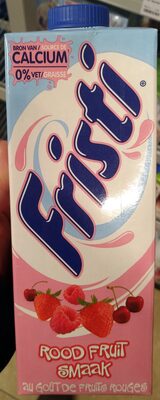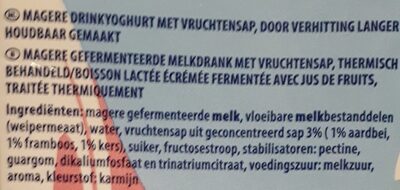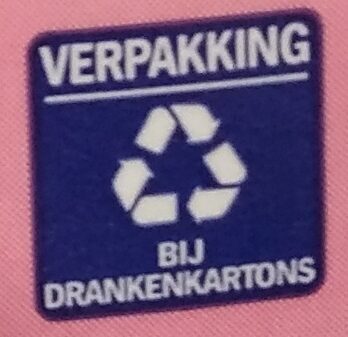Rood Fruit Smaak - fristi - 1l
This product page is not complete. You can help to complete it by editing it and adding more data from the photos we have, or by taking more photos using the app for Android or iPhone/iPad. Thank you!
×
Barcode: 5410438040731 (EAN / EAN-13)
Quantity: 1l
Packaging: Tetra Pak
Brands: Fristi
Categories: Beverages and beverages preparations, Beverages, Dairies, Dairy drinks, Flavoured milks, Sweetened beverages
Labels, certifications, awards:
Animal welfare, FSC, FSC Mix, fr:Lait de paturage
Origin of the product and/or its ingredients: Dit zuivelproduct is gemaakt van weidemelk afkomstig van koeien die ten minste 120 dagen per jaar, minimaal 6 uur per dag in de wei lopen.
Origin of ingredients: Belgium
Traceability code: BE M322A EC
Countries where sold: Belgium, France, Netherlands
Matching with your preferences
Report a problem
Data sources
Product added on by kiliweb
Last edit of product page on by bertusdendroef.
Product page also edited by annelotte, countrybot, cyberax99, ecoscore-impact-estimator, elmoeprad, inf, moon-rabbit, openfoodfacts-contributors, sebleouf, wava, wortelvreter, yuka.VDU4eFRZMWFxTWxUc01VUHd4Lzg0TjF0K29LbmJVSzhkTWdlSVE9PQ, yuka.VFBFbEFyWTRpOE12bVBaZzVnMzArdk5yelpqNVVIUHNBYmM4SUE9PQ, yuka.ZlB3NUxZWWovdG8zbE1KaDlCMksvWWd2NHFXV1J6Mm5KYzFNSVE9PQ, yuka.sY2b0xO6T85zoF3NwEKvll5fd9jFszn_OUHuxFe67NSrFqTGQsNRw4fZCKs.










